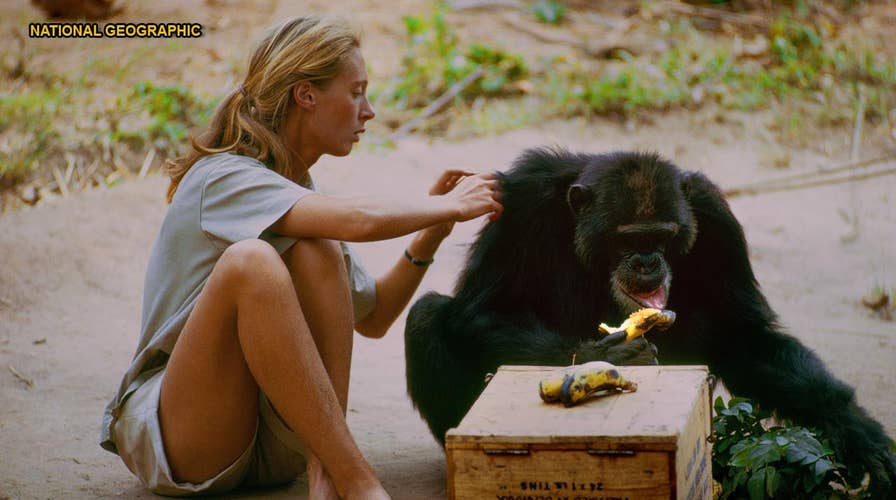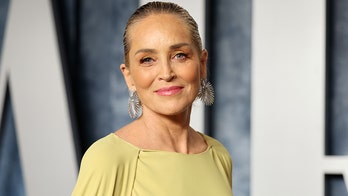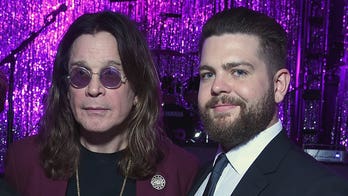Jane Goodall was hesitant to take part in new documentary
British primatologist Jane Goodall discusses why she was hesitant to appear in yet another film about how she left behind everything she knew in England to study chimpanzees in the wild of Africa in 1960.
At age 83, Jane Goodall was hesitant to appear in yet another film about how she left behind everything she knew in England to study chimpanzees in the wild of Africa in 1960. However, the pioneering British primatologist would ultimately change her mind — and she has zero regrets.
Goodall is the subject of a new documentary on the National Geographic channel titled “Jane,” which explores how a young woman chose to embark on a male-dominated field and tirelessly dedicated her life to animals.
Created by Oscar-nominated director Brett Morgen, who originally stirred headlines for his 2015 film “Cobain: Montage of Heck,” it features over 100 hours of never-before-seen footage that has been tucked away in the National Geographic archives for over 50 years and later found within a storage locker in 2014.
The rare silent footage was shot by her ex-husband, leading wildlife filmmaker Hugo van Lawick, who passed away in 2002 at age 65.
Goodall told Fox News she and Morgen needed some convincing to be on board with what seemed to be a tiresome concept. She reportedly appeared in more than 40 films and didn’t think another was necessary.
“Well, I wasn’t interested in it at first anymore than the actual director was,” said Goodall. “I thought after so many films about Jane and the chimps, surely it wasn’t needed. But the Jane Goodall Institute here in the U.S., they persuaded me.
"They said, ‘Jane, we need the publicity. We need the funds. We always need funds for our programs in Africa and our programs for youth… Brett Morgen, the director, he was sent some of this footage and he fell in love with it, so he agreed to do it too.”
Goodall gets very candid on her personal life in the film, including how she fell in love with van Lawick in the jungle and became a mother to her only son, and she said it wasn’t difficult to share the stories behind some of the happiest times of her life.
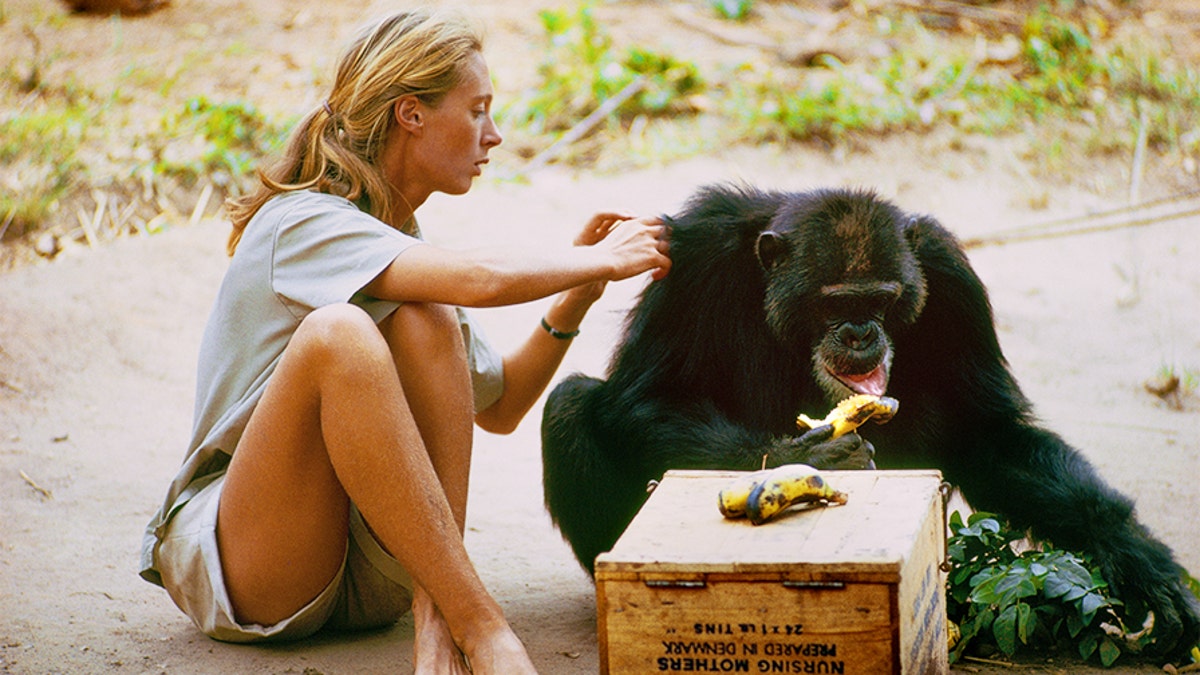
Gombe, Tanzania - David Greybeard was the first chimp to lose his fear of Jane, eventually coming to her camp to steal bananas and allowing Jane to touch and groom him. As the film JANE depicts, Jane and the other Gombe researchers later discontinued feeding and touching the wild chimps. The feature documentary JANE will be released in select theaters October 2017. (National Geographic Creative/ Hugo van Lawick) (National Geographic Creative)
“They always talk of me as an icon, a role model for girls and that sort of thing,” she said. “They better know I am, don’t you think?”
Goodall, who was 26 when she embarked on her journey, was at ease to venture into the little-known world of chimpanzees, or what she calls humankind’s closest living relatives. Equipped with little more than a notebook and binoculars, she happily immersed herself within their habitat, a rarity for that time.
“Jane” reveals how Goodall was often scrutinized by the press at that time for her looks, as well as for just being a woman within a profession ruled by men.
“First of all, I never wanted to be a scientist,” she said. “I just wanted to learn about the chimps… And quite honestly, I didn’t really care what they said, as long as I was getting funding for National Geographic. I was studying the chimps and if they didn’t believe me, well, they had to because Hugo filmed it all. I didn’t wish to get into the science community. It didn’t really matter.”
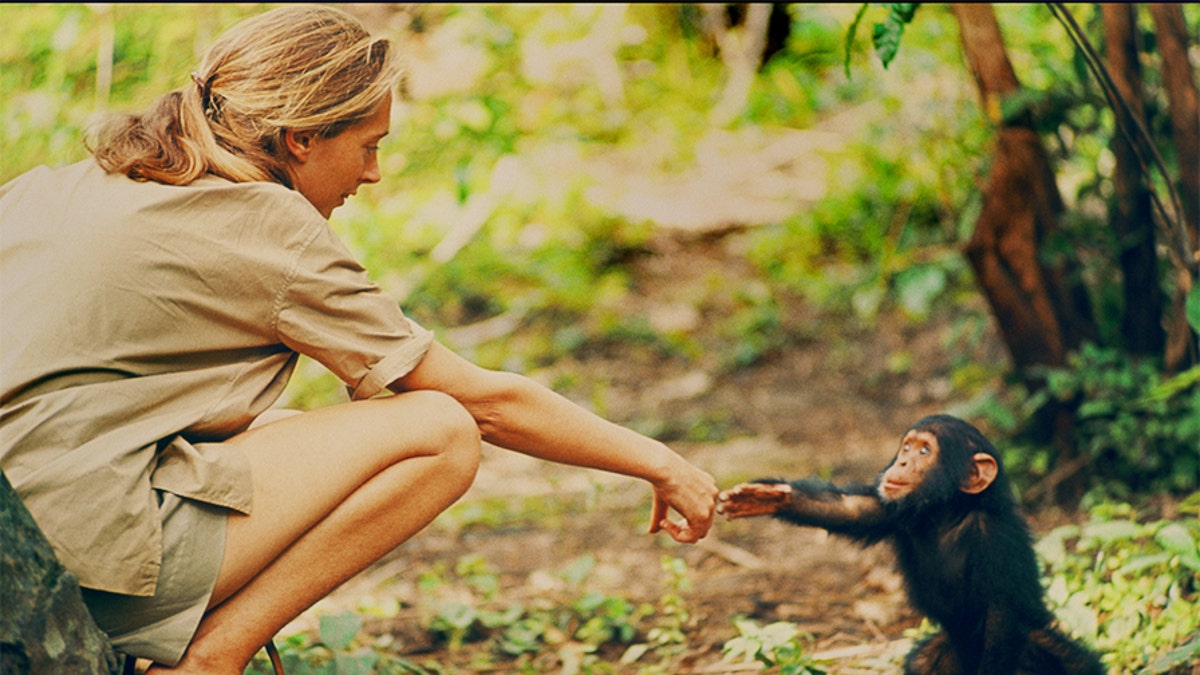
Gombe, Tanzania - Jane Goodall and infant chimpanzee Flint reach out to touch each other's hands. Flint was the first infant born at Gombe after Jane arrived. With him she had a great opportunity to study chimp developmentâand to have physical contact, which is no longer deemed appropriate with chimps in the wild. The feature documentary JANE will be released in select theaters October 2017. (National Geographic Creative/ Hugo van Lawick) (National Geographic Creative)
Still, Goodall insisted it's gotten better for women over the years, especially with the #MeToo movement in Hollywood shedding light on harassment in the workforce.
“Many people tell me more work needs to be done,” said Goodall. “Certainly in developing countries. The exploitation of women is dreadful in many countries. Especially when you get the fanatic Muslim society. Not the rational, real Muslim religion.
"But when you get something like ISIS or Al-Qaeda, they treat their women terribly. And some African countries as well. But in Europe and America, I think it’s definitely getting easier for women. [But] it all depends on the particular line of work. So it’s not my subject. I haven’t delved into it.”
“Jane” also highlights how Goodall was determined to balance her high-profiled work, all while being a hands-on mother. She gave birth to Hugo Eric Louis van Lawick or “Grub,” as she affectionally calls him, in 1967.
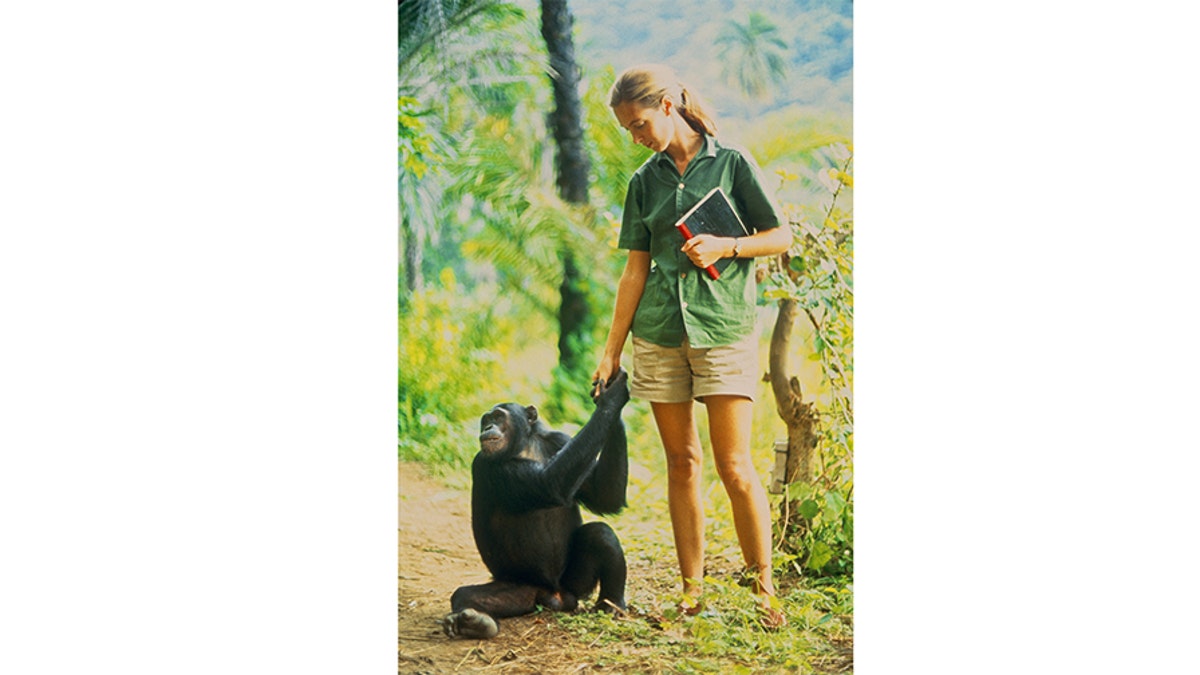
Gombe, Tanzania - Jane formed a close bond with young Fifi. As the film "Jane" depicts, Jane and the other Gombe researchers later discontinued feeding and touching the wild chimps. The feature documentary JANE will be released in select theaters October 2017. (National Geographic Creative/ Hugo van Lawick) (National Geographic Creative)
Knowing chimpanzees could possibly harm little Grub while they hunted for food, she built an extensive, protective cage for him and never left his side as she continued her studies.
“That was when he was a very tiny baby,” she clarified. “Before he could walk. It was a sort of cage, which we built. But you could stand upright and walk across it. He couldn’t even crawl. So it was almost like a giant cot. And he was never on his own. He was never left even for five minutes without somebody in the room with him. And I never left him one single night until he was 3 years old.”
Grub, who grew up among African wildlife, was ultimately sent to England for an education and ultimately became a boat builder in Tanzania, where he still lives with his family today. Goodall said he has seen the film and revisited his unique childhood.
“He really enjoyed [the new documentary],” said Goodall. “I was not sure how he would take to it, but he loved it. He said he didn’t feel at all connected to that little baby [shown in the film].”
Goodall said that despite her decades-long research, there’s still plenty we can learn from chimpanzees and hopes the documentary will inspire other young girls to pursue a similar field. She revealed chimpanzees have their own fascinating behaviors and are highly adaptable to their environments.
“In Gombe, they would never dream of leaving their nests at night,” she explained. “But in Senegal, where it’s really, really hot, they will forage in the full moonlight. In Uganda, they’re forced to raid crops because more and more of their forest homes are destroyed.
"They also go out at night because it’s safer. So we’re learning more and more about their capability to adapt. The more we learn about our closest living relative, the more I think it helps us to understand human evolution.”
Goodall still stays busy and just as passionate. She travels around the world 300 days of the year to share her knowledge with children. She’s actively involved with Roots & Shoots, her youth service program that aims to inspire individuals to protect the environment and its people.
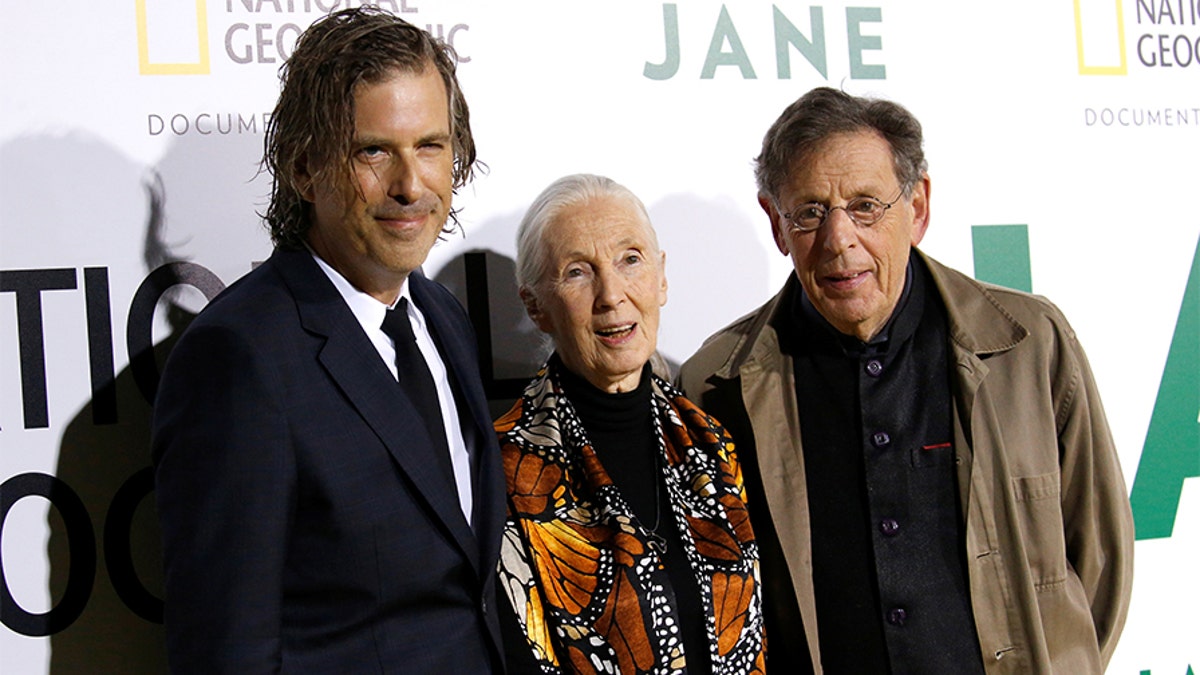
British primatologist Jane Goodall poses with director Brett Morgen (L) and composer Philip Glass at the premiere for the documentary "Jane" in Los Angeles, California, U.S., October 9, 2017. (Reuters)
“[I have to] give the youngsters hope that if we get in and act together, we can change the world before it’s too late,” she said. “But we have to take action. And I don’t know how many years I have left. So the fewer years I have, the harder I have to work. The most important message I have for people is to remember the planet.
"We can make some kind of impact and we can choose what kind of impact we make… Many people don’t take action because they feel helpless and hopeless and think, ‘Well, what can one person do?’ But when you look at the cumulative of billions of people making ethical choices, you start to see a better world.”
"Jane" airs Monday, March 12 at 8 p.m. on National Geographic and Nat Geo Wild.
